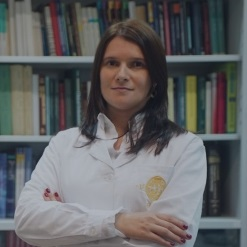Symmetry in Dentistry: From the Clinic to the Lab
A special issue of Symmetry (ISSN 2073-8994). This special issue belongs to the section "Life Sciences".
Deadline for manuscript submissions: closed (20 June 2022) | Viewed by 50324
Special Issue Editors
2. Institute of Biophysics, Faculty of Medicine, University of Coimbra, 3000-354 Coimbra, Portugal
3. Institute for Clinical and Biomedical Research (iCBR), Area of Environment Genetics and Oncobiology (CIMAGO), Faculty of Medicine, University of Coimbra, 3000-354 Coimbra, Portugal
4. Clinical Academic Center of Coimbra (CACC), 3000-354 Coimbra, Portugal
5. Center for Innovative Biomedicine and Biotecnhology (CIBB), 3000-354 Coimbra, Portugal
6. Institute of Experimental Pathology, Faculty of Medicine, University of Coimbra, 3000-354 Coimbra, Portugal
Interests: experimental pathology; stem-cells; regeneration; animal models; dentistry; biocompatibility; evidence-based medicine
Special Issues, Collections and Topics in MDPI journals
Interests: dentistry; dental biomaterials; photodynamic therapy; cancer; in vitro and animal models
Special Issues, Collections and Topics in MDPI journals
Interests: oncobiology; genetics; molecular biology; nutrition; drug resistance
Special Issues, Collections and Topics in MDPI journals
Special Issue Information
Dear colleagues,
Although not always evident, symmetry is present in all aspects of our lives, from nature to human built structures, from macrostructures to the smallest components of our cells. The human body is no exception, and symmetry plays a fundamental role in human morphology, aesthetics and function.
In the field of dentistry, symmetry is responsible for the perfect balance between the oral structures, the beauty of the face and the smile, and the adequate function of the stomatognathic system. Due to its importance, we aim for symmetry in our daily practice, performing treatments and developing materials to restore the lost tissues, functions and aesthetics. Many of these materials present a symmetrical structure, which directly influences their properties.
In this Special Issue of Symmetry, we will focus on symmetry in dentistry, from the clinic to the laboratory. We are interested in the application of symmetry in modern dentistry, covering the face, smile and teeth aesthetics and morphology, smile design, applications of symmetry for orthodontic and surgical treatments, symmetry on human development of the craniofacial region, and symmetrical patterns on oral diseases, among others. Importantly, papers discussing the role of natural asymmetry are welcome, since beauty is not always symmetrical.
At the same time, we are focused on discussing the role of symmetry and asymmetry in the development and evaluation of biomaterials, such as ceramics, composites or polymers. This includes their design and structure, but also a strong focus on their biological behavior, from in vitro to in vivo models. Particularly, their effect at the tissue and cellular level is of great interest, from the impact on protein expression and function, DNA and RNA synthesis, cell membranes alterations, or cytoskeletal modifications, among others.
Lastly, the importance of symmetry on cell division and behavior, mainly stem cells from dental origin or for oral tissues regeneration, presents an exciting topic to be discussed.
Dr. Carlos Miguel Marto
Dr. Mafalda Laranjo
Dr. Ana Cristina Gonçalves
Guest Editors
Manuscript Submission Information
Manuscripts should be submitted online at www.mdpi.com by registering and logging in to this website. Once you are registered, click here to go to the submission form. Manuscripts can be submitted until the deadline. All submissions that pass pre-check are peer-reviewed. Accepted papers will be published continuously in the journal (as soon as accepted) and will be listed together on the special issue website. Research articles, review articles as well as short communications are invited. For planned papers, a title and short abstract (about 100 words) can be sent to the Editorial Office for announcement on this website.
Submitted manuscripts should not have been published previously, nor be under consideration for publication elsewhere (except conference proceedings papers). All manuscripts are thoroughly refereed through a single-blind peer-review process. A guide for authors and other relevant information for submission of manuscripts is available on the Instructions for Authors page. Symmetry is an international peer-reviewed open access monthly journal published by MDPI.
Please visit the Instructions for Authors page before submitting a manuscript. The Article Processing Charge (APC) for publication in this open access journal is 2400 CHF (Swiss Francs). Submitted papers should be well formatted and use good English. Authors may use MDPI's English editing service prior to publication or during author revisions.
Keywords
- symmetry
- dentistry
- dental biomaterials
- aesthetics
- stem cells
- in vitro models
- in vivo models
- smile design






